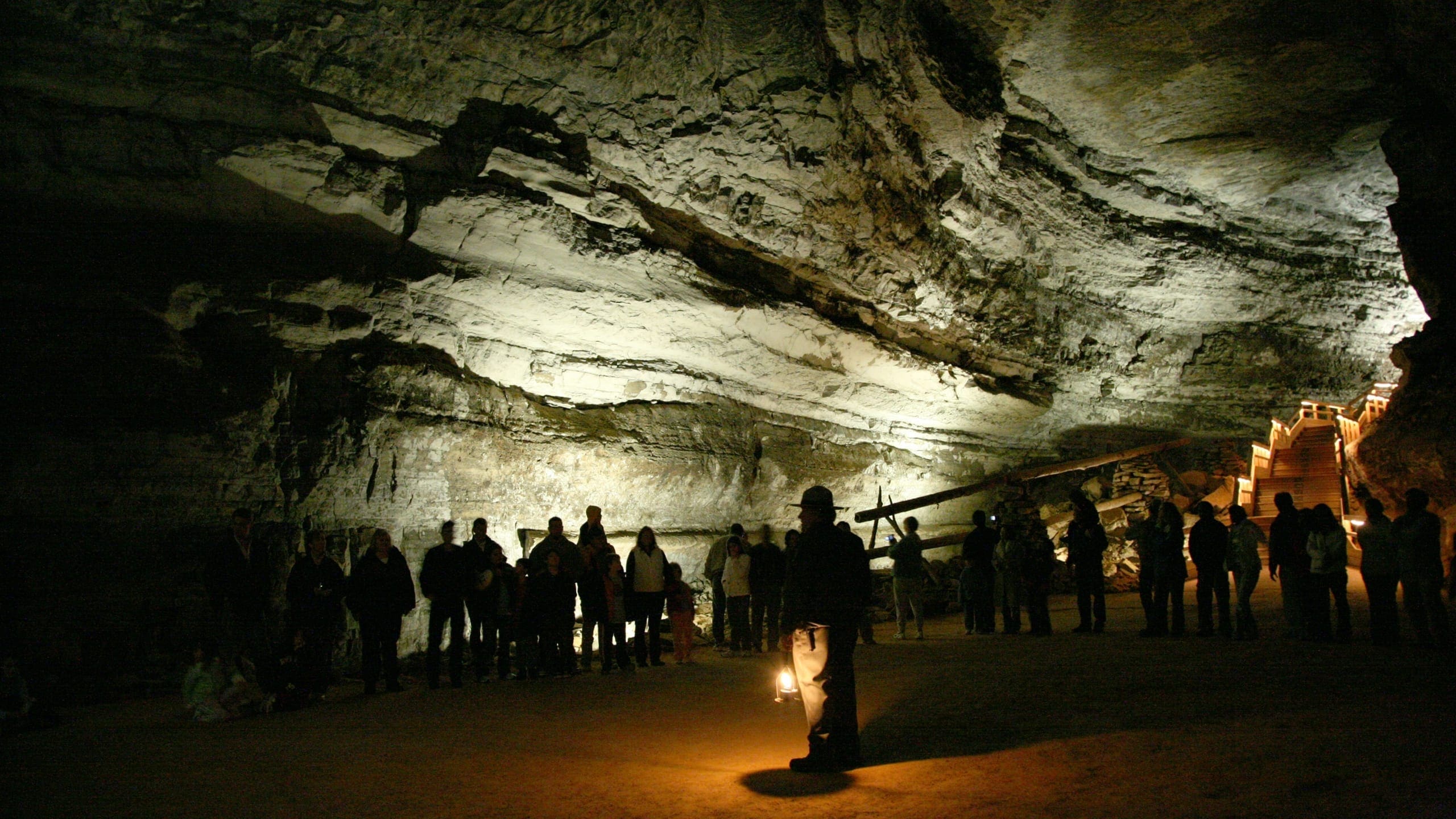About Mammoth Cave National Park
Mammoth Cave has represented the challenge of the unknown for millennia, from the time the first American Indian explorers ventured inside some 5,000 years ago to the cave’s rediscovery by European settlers at the turn of the 19th century, and still today as explorers, scientists, and visitors from the United States and around the world brave its shadowed chambers in search of wonder and new knowledge. Named for the enormity of its “mammoth” subterranean vaults and the unparalleled extent of its passages, Mammoth Cave is the longest known cave system in the world with 400 miles surveyed to date.
In 1941, Mammoth Cave’s superlative qualities led the Southern Appalachian National Park Commission to recommend that the cave be made into a national park along with other national treasures such as Great Smoky Mountains and Shenandoah. The Mammoth Cave National Park Association and the Kentucky National Park Commission began the necessary, and unprecedented, 15-year process to convert settled areas into parklands, and once congressional requirements were met, Mammoth Cave National Park entered the national park system.
Today, Mammoth Cave National Park (the park) comprises approximately 52,830 acres in Edmonson, Hart, and Barren counties in the Commonwealth of Kentucky. Visitors are drawn to the park by its caves, scenic river valleys, bluffs, forests, and abundant wildlife. The park offers ranger-led cave tours and surface walks, camping, hiking, horseback riding, bicycling, scenic drives, canoeing and kayaking, fishing, accessible trails, and picnicking. This breadth of activities is available because Mammoth Cave National Park is a park on two levels—reclaimed hardwood forest and winding riverways above, and complex cave systems below.
For good reason, Mammoth Cave’s cavernous limestone or “karst” features draw the most interest. In karst terrain, everything that happens on the surface affects the caves below— surface and subsurface are intricately bound together and water is the binding thread through all aspects of the park. Rainwater enters the underground river system through cracks, crevices and thousands of sinkholes, some up to 10 miles outside the park boundary, and eventually emerges through springs into the Green River. Over millions of years, water has slowly cut and dissolved its way deeper into the landscape, leaving upper levels of dry cave behind; underground rivers at the water table are still carving new passages today. Myriad related geologic processes contribute to the formation not only of the extensive Mammoth Cave / Flint Ridge / Roppel Cave system, but to hundreds of smaller caves in the park, as well as numerous other karst features. Within the subterranean spaces, the interplay of water and mineral has produced remarkable formations in stone, some of them breathtaking in their beauty and fragility.
The mosaic of habitats and diversity of forests types, grasslands, and caves supports more than 1,300 plant species and is home to more than 70 threatened, endangered, or state-listed species. Mammoth Cave is recognized as having one of the most diverse karst biota in the world, including more than 40 species that spend their entire life in the cave and almost 100 others that can readily be found in the caves. Thirty-six species of animals have been described from park caves.
Yet even without the world’s longest cave system, the land within Mammoth Cave National Park would merit national park status simply for its extraordinary density and diversity of plant and animal life. The park has one of the most biologically diverse river systems in the nation. Historically, more than 70 mussel species inhabited Green River, where today that number has been reduced by approximately 20 species and many of those remaining are imperiled. Even so, Green River still holds one of the most diverse populations of mussels in the eastern United States. Approximately 150 species of freshwater fish are known from the entire extent of the Green River.
In addition to extensive natural resources, the park offers a rich cultural history. Archeologists believe prehistoric people entered the cave approximately 5,000 years ago and the cave’s stable atmosphere and protection from disturbance preserved their discarded torches, sandals, and gourd bowls. After the cave’s rediscovery by European settlers, the cave saw several uses, but quickly became a magnet for tourists from the United States and abroad, beginning its first commercial tours in 1816. Some of the early cave guides were slaves, including Stephen Bishop, Mat Bransford, and Nick Bransford, who discovered many of its famous passages. The park also contains nationally significant historic structures, including 1812-era mining works for saltpeter (an ingredient for gunpowder that influenced the history of the nation during that period), churches built in the 19th century, and structures built by the Civilian Conservation Corps (CCC) in the 1930s.
The cultural and natural resources protected within this national park are national treasures. In recognition of these world-class resources, the park has received two international designations. In 1981, the United Nations Educational, Scientific and Cultural Organization (UNESCO) designated Mammoth Cave as a World Heritage Site. In 1990, the Mammoth Cave Area International Biosphere Reserve was designated (with all park acreage included in a core 112,800-acre area) and it was expanded to 909,328 acres in 1996.
Explorers continue to discover the secrets of Mammoth Cave, and visitors to this national park continue to be drawn to its diversity, its beauty, and its mystery, as they have been since prehistory.
Source: Foundation Document – Mammoth Cave National Park
Fast Facts:
| Date the Park was Established: | July 1, 1941 |
| Park Area (as of 2019): | 54,011.91 acres (218.6 km2) |
| Recreational Visitors (2018 Total): | 533,206 visitors |


